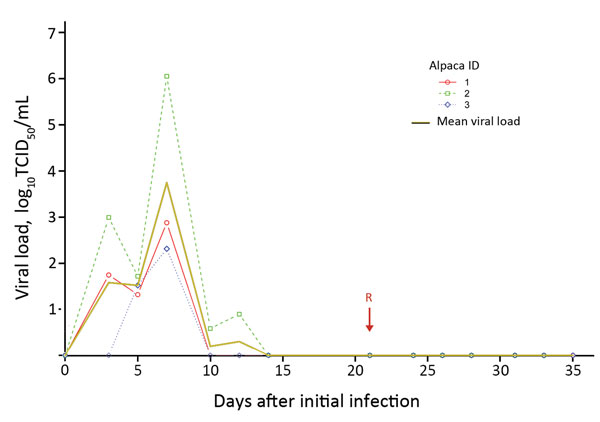Volume 22, Number 6—June 2016
Dispatch
Experimental Infection and Response to Rechallenge of Alpacas with Middle East Respiratory Syndrome Coronavirus
Figure

Figure. Virus shedding of MERS-CoV from 3 infected alpacas as detected from the deep nasal swab samples by day after initial infection and reinfection. Viral load was estimated from real-time cycle threshold values and a calibration experiment. Arrow indicates day 21, when the animals were reinfected with MERS-CoV. MERS-COV, Middle East respiratory syndrome coronavirus; TCID, tissue culture infective dose.
Page created: May 16, 2016
Page updated: May 16, 2016
Page reviewed: May 16, 2016
The conclusions, findings, and opinions expressed by authors contributing to this journal do not necessarily reflect the official position of the U.S. Department of Health and Human Services, the Public Health Service, the Centers for Disease Control and Prevention, or the authors' affiliated institutions. Use of trade names is for identification only and does not imply endorsement by any of the groups named above.